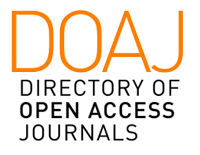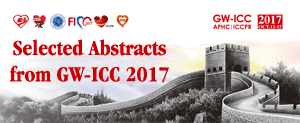[GW28-e0429]
Protective Effect of Physcion on Homocysteine-induced Endothelial Dysfunction via Activation of PI3-kinase/Akt- and Ca2+-eNOS-NO Pathway
Hangji Lyu2 Xiaowei Ji3 Ziqi Zhou3 Mei Zhuang3 Qingqing Yang3 Songnan Jin3 Kyungwoo Cho1 Jinfu Wen1
1.Institute of Atherosclerosis, Key Laboratory of Atherosclerosis in Universities of Shandong, Taishan Medical University, Taian, Shandong, 271000, China
2.College of Basic Medical Sciences, Taishan Medical University, Taian, Shandong, 271000, China
3.School of Pharmacy, Taishan Medical University, Taian, Shandong, 271000, China
Objectives: Homocysteine (Hcy) plays important roles in the occurrence and development of cardiovascular disease. Chronic cardiovascular complications induced by hyperhomocysteinemia (HHcy) have been most relatively associated with endothelial cell injury. Recently, Natural products have attracted increasing interests in the prevention and treatment of cardiovascular diseases. Physcion, an anthraquinone derivative, has been widely used as mild laxatives. It has also been reported that physcion has a variety of pharmacological properties including hepatoprotective, anti-inflammatory, and anti-microbial activities. However, the effect of physcion on Hcy-induced endothelial dysfunction has not yet been defined. The purpose of the present study was to define the protective effect of physcion on homocysteine-induced endothelial dysfunction and its mechanisms involved.
Methods: Sprague-Dawley rats were assigned randomly to four groups: control, physcion, HHcy and physcion + HHcy groups. HHcy was induced in rats by feeding a high-methionine diet, which consisted of a regular diet plus 3% methionine. Physcion (50 mg/kg/d) was administratedby intragastrical gavage for 8 weeks. The isometric tension of isolated phenylephrine-precontracted rat thoracic aorta rings in response to different concentrations of acetylcholine (ACh), SNAP and CNP were measured respectively. Human umbilical vein endothelial cells (HUVECs) were cultured in vitro. Hematoxylin-eosin (HE)staining, methyl thiazolyl tetrazolium assay (MTT), enzyme linked immunosorbent assay (ELISA), fluorescent staining, confocal fluorescence detection, flow cytometry, and western blot were used.
Results: In the aortic sections, intimal endothelial layers of HHcy rats were rougher than those of control rats. Both plasma Hcy and ANP levels were elevated in HHcy rats. Treatment with physcion significantly reversedtheendothelial cell morphologicalchangesand decreased the elevated plasma levels of Hcy and ANP in HHcy rats. ACh, SNAP and CNP induced vasorelaxation in a concentration-dependent manner in aortic rings from control and HHcy rats, respectively. The responses were significantly attenuated in aortic rings from HHcy rats compared to those from control ratsand treatment with physcion significantly reversedthe attenuated responses. Physcion reversed the impaired viability and apoptosis of HUVECs induced by Hcy in a dose-dependent manner. Moreover, physcion enhanced the protein ratio of p-Akt/Akt, increased the expression and phosphoylation of endothelial nitric oxide synthetase (eNOS) and nitric oxide (NO) formation in HUVECs injured by Hcy. Theseeffects were blocked by wortmanin, aPI3-kinase/Aktinhibitor. In HUVECs, physcion increased Hcy-induced decrease in the levels of intracellular calcium, which was inhibited by 2-Aminoethyldiphenyl borate(2-APB), a novel inhibitor of store-operated Ca2+channels. Furthermore, physcion suppressed Hcy-induced increase in reactive oxygen species (ROS) and and malondialdehyde (MDA) levels, and increased Hcy-induced decrease in superoxide dismutase (SOD) in HUVECs.
Conclusions: Physcion prevents Hcy-induced endothelialdysfunction via modulation of PI3-kinase/Akt- and Ca2+-eNOS-NO pathways, attenuating oxidative damage and apoptotic signaling.
This work was supported by a research grant from the National Natural Science Foundation of China (Nos. 31571175, 81270920), the Natural Science Foundation of Shandong Province (No. ZR2015HM037).














